The Man Who Shot Godzilla:
Honda Ishiro Retrospective
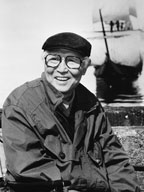 What Lies Beyond Godzilla?
What Lies Beyond Godzilla?
No one would deny that Godzilla is one of the most famous Japanese films. Why do people still talk about it today? I’m sure some would say it’s because of the wonderful special effects or the terrifying monster design. But in my opinion, the true reason Godzilla is valued is that those SFX techniques are supported by a storyline that portrays real human beings. The director Honda is the one who achieved this.
Honda was born in the village of Asahi in Tsuruoka, Yamagata Prefecture in 1911, and was raised there until the third grade of elementary school. How might that experience have influenced and been reflected in his film style? By concentrating on his non-SFX films, this retrospective aims to re-evaluate just what Honda wished to achieve in his “human dramas.” We hope that audiences will appreciate the song of praise to humanity that reverberates beyond the roar of monsters.
(Saito Kenta)
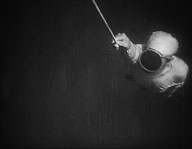 Nissan Geographical Outline, v.1: Ise Shima National Park
Nissan Geographical Outline, v.1: Ise Shima National Park
(“Nihon sangyo chiri taikei daiippen: Kokuritsu koen Ise Shima”)- 1949 / Japanese / B&W / Video (Original: 35mm) / 20 min
Director, Script: Honda Ishiro
Photography: Kawamura Kiyoei, Ushiyama Kunikazu
Sound: Konuma Wataru Music: Hara Rokuro
Lighting: Ito Kazuo Narrator: Tokugawa Musei
Production Company: Toho (Culture Films Department)
Source: Nichiei Archives
Honda’s first film as a director, an educational documentary. An excellent film that carefully introduces the natural features and history of Ise Shima, a tourist region in central Japan, including the transformation of Ise Shrine before and after the war, the cultivation of pearls, and the lives of the female pearl divers of the region. The underwater scenes of those pearl divers were the first true examples of underwater photography in Japan. This valuable film puts us in mind of Honda’s later work in the way that it uses magical images while creating an authentic portrait of people’s lives.
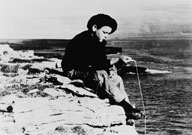 Man of Aran
Man of Aran
- USA / 1934 / English / B&W / 35mm / 76 min
Director: Robert Flaherty
Script: Robert Flaherty, Frances Flaherty, John Goldman
Photography: Robert Flaherty, David Flaherty, John Taylor
Editing: John Goldman
Sound: H. Hand Music: John Greenwood
Cast: Colman “Tiger” King, Maggie Dirrane, Michael Dillane, Pat Mullin
Producer: Michael Balcon
Production Companies: Gainsborough Pictures for Gaumont-British Corp.
Source: The Yamagata Documentary Film Library
Directed by Robert Flaherty, sometimes called the “father of the documentary.” A gem of a film set in the Aran Islands, off the coast of Ireland, it portrays the relationship between man and nature. Honda Ishiro was deeply impressed by this film: it is said to have provided the inspiration for his Ise Shima National Park. We can recognize the roots of Honda’s films as we experience once again the visual beauty of Flaherty’s images.
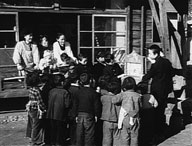 Night School
Night School
(“Yakan Chugaku”)- 1956 / Japanese / B&W / Video (Original: 35mm) / 44 min
Director: Honda Ishiro
Script: Mizuki Yoko Original Story: Yonei Kinnosuke
Photography: Maeda Minoru Art Director: Kato Masatoshi
Sound: Fujiyoshi Masao, Inoue Toshihiko Music: Kato Mitsuo
Lighting: Ito Kazuo Planning: Watanabe Shunpei, Uchiyama Norinao
Cast: Yoshioka Okinari, Ando Takeshi, Takahashi Teiji, Kobayashi Keiju, Kogure Michiyo, Boya Saburo, Miki Norihei
Production, Source: Nihon University College of Art
Honda’s adaptation of Mail Desk, a novel written under the pseudonym Yonei Kinnosuke by Seta Teiji, known for his translations of The Lord of the Rings and The Chronicles of Narnia. Various dramas unfold around an exchange of letters left in the desk shared by Senta, who goes to middle school at night, and Ryohei, who attends the same school during the day. The film was produced by the Nihon University College of Art, and so features guest appearances by famous alumni of that college such as Uno Jukichi and Kobayashi Keiju.
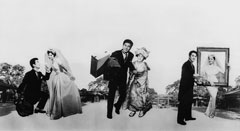 Song for a Bride
Song for a Bride
(“Hanayome sanjuso”)- 1958 / Japanese / B&W / 35mm / 87 min
Director: Honda Ishiro
Script: Wakao Tokuhei
Photography: Koizumi Hajime Art Director: Kita Tatsuo
Sound: Hosaka Arimasa Music: Sato Masaru
Lighting: Kishida Kuichiro
Cast: Yanagiya Kingoro, Kusabue Mitsuko, Negishi Akemi, Dan Reiko, Kiyokawa Nijiko, Sahara Kenji, Tsuchiya Yoshio
Production Company, Source: Toho
A comedy about a man with three daughters who has been persuaded to run for office in the local government. Despite the slapstick flavor of this masterpiece, we can still feel Honda Ishiro‘s love for ordinary people. The film stars rakugo performer Yanagiya Kingoro, who was highly popular at the time. Koizumi Hiroshi, seen to good effect in other Honda films such as Mothra, also appears. The film debut of Wakabayashi Akiko, who later appeared in the James Bond film You Only Live Twice.
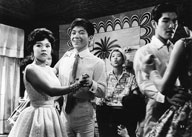 Seniors, Juniors, Co-Workers
Seniors, Juniors, Co-Workers
(“Uwayaku shitayaku godoyaku”)- 1959 / Japanese / B&W / 35mm / 89 min
Director: Honda Ishiro
Script: Sawamura Tsutomu
Based on the essay by: Yamato Yuzo
Photography: Koizumi Hajime Art Director: Muraki Yoshiro
Sound: Fujinawa Shoichi Music: Hirose Kenjiro
Lighting: Inohara Ichiro
Cast: Kato Daisuke, Kubo Akira, Kubo Ken, Mizuno Kumi, Kusabue Mitsuko, Segi Shunichi, Kuji Asami, Sakamoto Kyu
Production Company, Source: Toho
A salaryman (businessman) film based on an essay by management consultant Yamato Yuzo. Along with Song for a Bride, this masterpiece has never been released on video or DVD. Shuhei is a widower and a serious businessman. A plan to get him remarried gets mixed up with a romance involving a college chum of Shuhei’s ambitious nephew, causing all kinds of complications. The screen is filled with the youthful talent of Kusabue Mitsuko, Mizuno Kumi, and other actresses who went on to become household names.
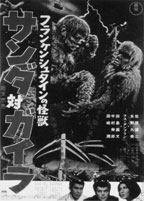 The War of the Gargantuas
The War of the Gargantuas
(“Furankenshutain no kaiju: Sanda tai Gaira”)- 1966 / Japanese / Color / 35mm / 88 min
Director: Honda Ishiro
Script: Mabuchi Kaoru, Honda Ishiro
Special Effects Director: Tsuburaya Eiji
Photography: Koizumi Hajime Editing: Fujii Ryohei Art Director: Kita Takeo
Sound: Tone Norio Music: Ifukube Akira Lighting: Takashima Toshio
Cast: Sekida Yu, Nakajima Haruo, Mizuno Kumi, Sahara Kenji, Russ Tamblyn
Production Company, Source: Toho
A unique work, even by the standards of Honda’s many special effects films. Sanda and Gailah are sibling monsters, born from Frankenstein’s surviving cells. The two monsters are raised apart but ineluctable fate forces them into a battle to the death. . . . This film influenced many later films in the genre by giving the monsters a clear human dimension. The monsters were designed by Narita Toru, who was born in Aomori Prefecture. Gailah was performed in costume by Nakajima Haruo, born in Sakata, Yamagata Prefecture. A monster film born of the talents of northeastern Japan.
